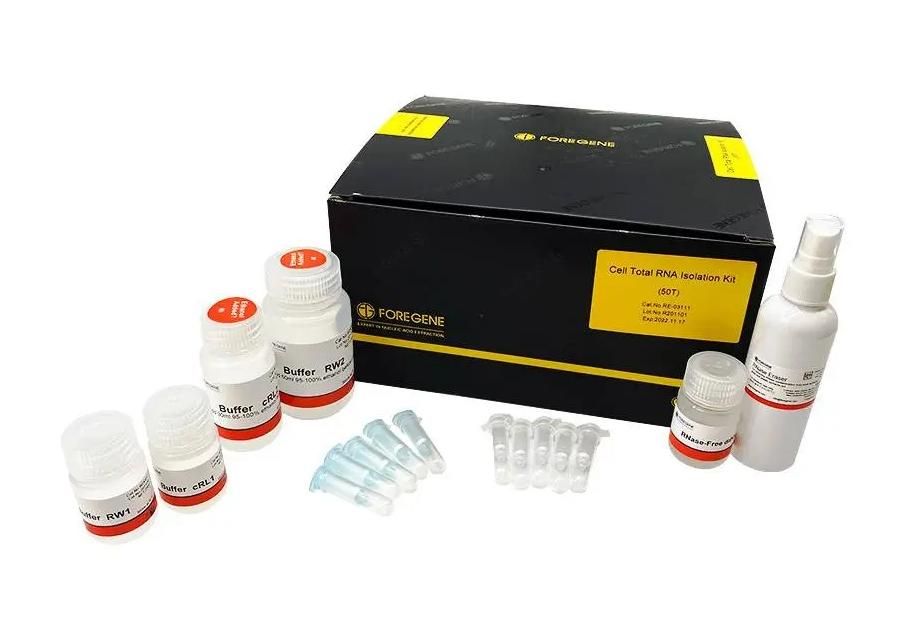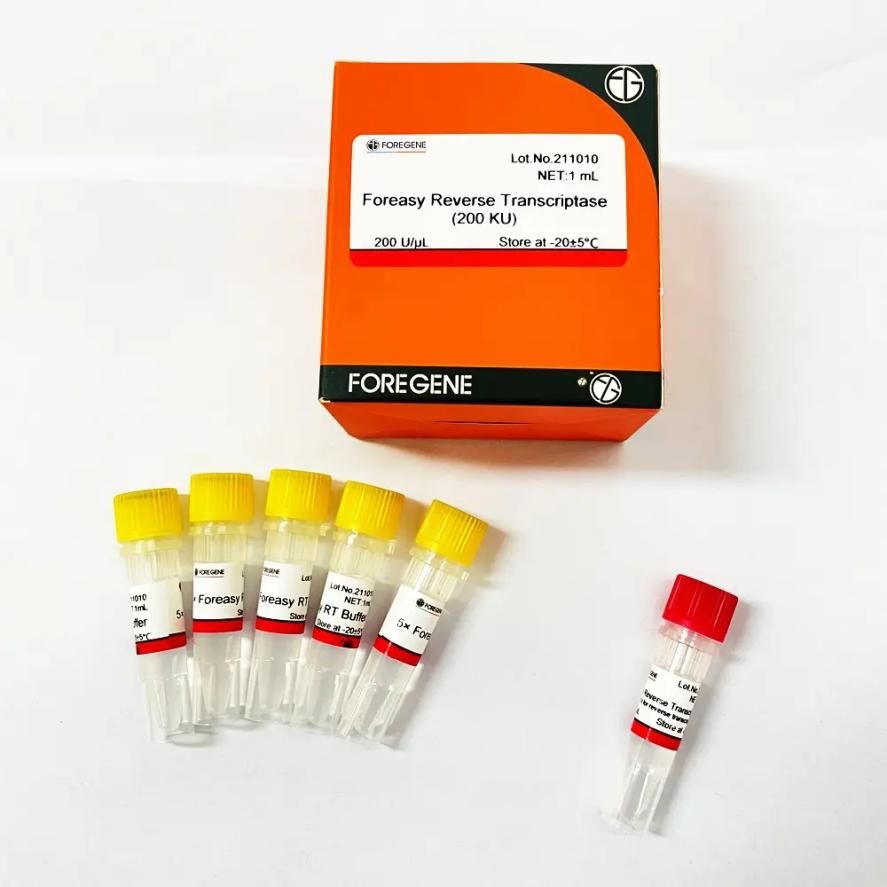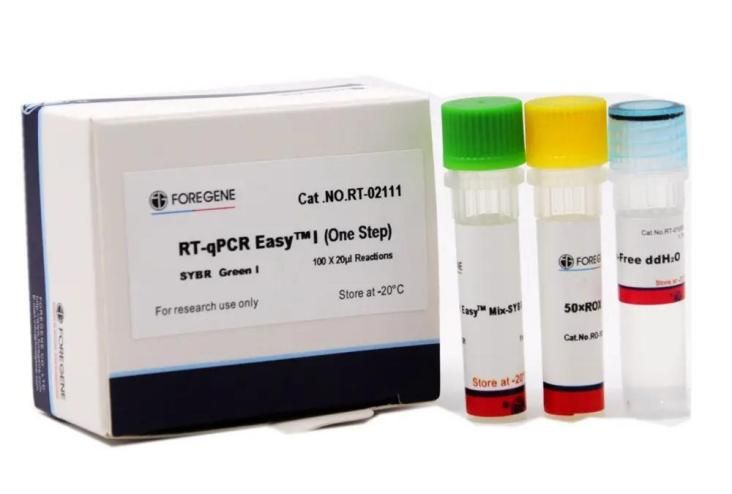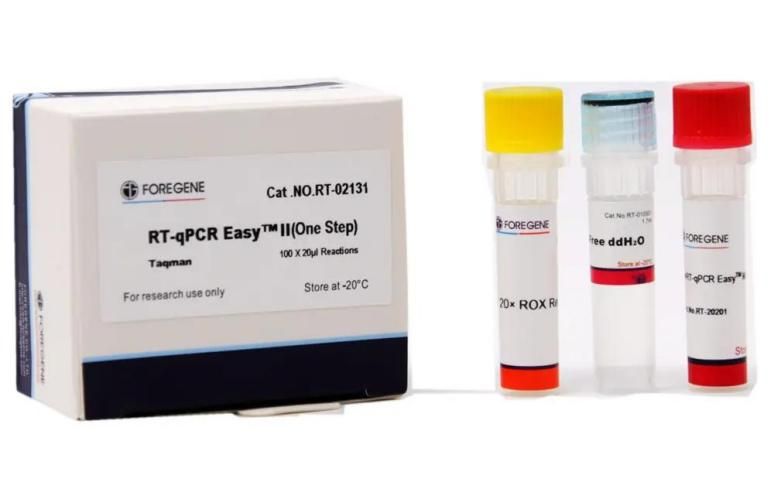RT-qPCR experiment includes RNA extraction and quality assessment, reverse transcription and qPCR three steps, each step has a lot of precautions, we will introduce in detail below.
Ⅰ. RNA quality assessment
In RT-qPCR experiment, after the completion of RNA extraction, the quality of RNA needs to be evaluated, and the follow-up experiment can only be carried out after it is qualified. Evaluation methods include spectrophotometer, Agilent gel electrophoresis, Agilent 2100 analysis, among which the most commonly used spectrophotometer and agarose gel electrophoresis method detection. It should be noted that these two methods need to be used together to complete the detection and analysis of RNA concentration, purity and integrity, so as to ensure the quality of RNA.
Related RNA Isolation Kit:
Highly purified and high-quality total RNA can be obtained from various cultured cells in 11min.
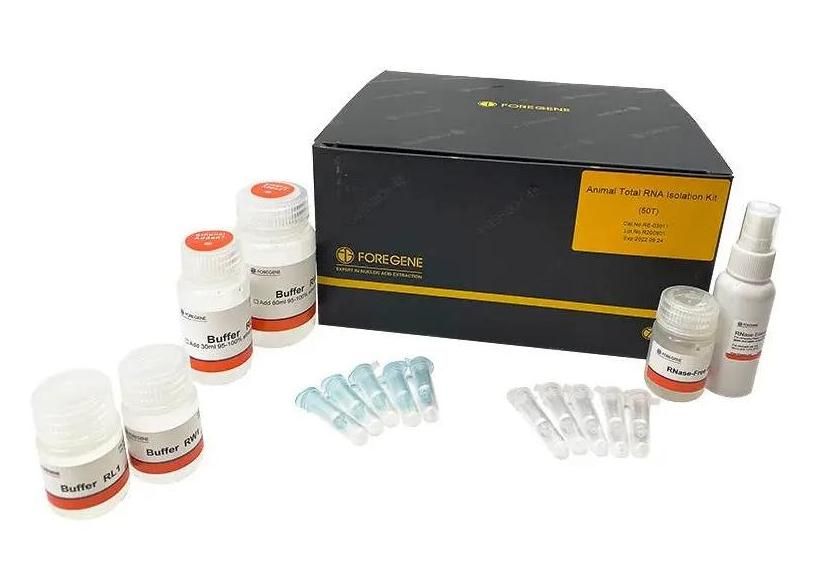
Animal Total RNA Isolation Kit
Quickly and efficiently extract high-purity and high-quality total RNA from various animal tissues.
Spectrophotometer:
The spectrophotometer is mainly used to determine the concentration and purity of RNA, but it can not detect the integrity of RNA and genomic residue. Among them, A260/280 and A260/230 are important parameters for RNA purity detection, and RNA purity can be detected according to the fluctuation of their values:
1. 1.9< A260/280< 2.1, indicating that RNA purity is good; A260/280<1.9, indicating that there may be protein residue in RNA; A260/280>2.1, indicating possible partial degradation of RNA, which can be further confirmed by agarose gel electrophoresis.
2. 2.0< A260/230< 2.2, indicating that RNA purity is good; A260/230< 2.0, indicating that there may be residues of organic reagents in RNA, such as phenols, ethanol or sugars.
Agarose gel electrophoresis:
Agarose gel electrophoresis assay can analyze RNA integrity, genome and protein residues, but cannot accurately quantify the concentration of RNA or detect the residues of organic reagents. Take eukaryotic RNA templates for example:
1. The RNA was subjected to agarose gel electrophoresis. If there were only three single bands of 28sRNA, 18sRNA and 5.8sRNA on the gel map, it indicates that the extracted RNA is intact. If there is a dragging phenomenon, it indicates partial degradation of RNA.
2. If there is a single bright band between the glue hole and the 28sRNA band, there may be genomic DNA residue.
3. If bands appear in the glue hole, it indicates that there may be residues of protein and other macromolecular substances.
Ⅱ. Reverse transcription
After RNA extraction is completed, it needs to be reversed into cDNA for subsequent experiments, so the reversal step is essential. Reverse transcription will be introduced from the selection of reverse transcriptase and primer:
Reverse transcriptase selection:
The typical reverse transcriptases include AMV RTase and MMLV RTase. The RNase H of AMV RTase has strong activity, short synthesis length, low synthesis amount and good thermal stability (42 ~ 55℃). The RNase H activity of MMLV RTase is weak, the synthesis length is long, the synthesis amount is high, and the thermal stability is poor (37 ~ 42℃).
Because RNase H enzyme has the function of degrading RNA template, MMLV with weak RNase H activity should be preferentially selected during reverse transcription, and after later genetic engineering, the thermal stability of MMLV has reached a qualitative leap. Taking Foregene Foreasy Reverse Transcriptase(M-MLV for reverse transcription) as an example, it is a new reverse transcriptase expressed in E. coli engineered bacteria using genetic recombination technology. It is a recombinant DNA polymerase that synthesizes a complementary DNA strand from single-stranded RNA, DNA, or an RNA:DNA hybrid. It has no RNase H activity, strong stability, strong RNA affinity, and high detection sensitivity.
Foreasy Reverse Transcriptase(M-MLV for reverse transcription)
Selection of primer:
Generally RT primers fall into three categories: oligo dT, random primers, and gene-specific primers. Select suitable primers for use according to different experimental requirements.
1. If the template is of eukaryotic origin and the late cDNA is used for routine PCR amplification, Oligo (dT) is recommended; If the subsequent experiment is only used for qPCR, Oligo (dT) is recommended to be mixed with random primers to improve the efficiency of reverse transcription.
2. If the template is from prokaryotes, Random Primers or gene specific primers should be selected for reverse transcription.
Ⅲ. qPCR
Fluorescence quantification is mainly elaborated from the selection of quantitative methods, primer design principles, ROX selection, reaction system configuration and reaction conditions setting, etc.
Selection of quantitative methods:
Quantitative methods are divided into relative quantitative methods and absolute quantitative methods. Relative quantification can be used to detect the effect of certain treatment methods on gene expression, detect the difference of gene expression at different times and compare the difference of gene expression in different tissues. Absolute quantification can detect the amount of nucleic acid in the virus and so on. When doing experiments, we must choose the appropriate quantitative methods according to our own experiments.
Primer design principles:
The design of primer for qPCR is directly related to the amplification efficiency and product specificity. Therefore, correctly designing good primers is the first step of successful qPCR. In the design of primer, the following principles should be paid attention to when meeting the principle of conventional primer design:
1. The length of the target fragment is controlled between 100 and 300 bp;
2. Cross-exon design to avoid the influence of genomic DNA;
3. The designed primers need to be tested for amplification efficiency, and only when the amplification efficiency reaches the standard (90-110%) can they be used for quantitative experiments;
4. Primer concentration is usually optimized between 0.1uM and 1.0uM.
Selection of ROX:
In the process of quantitative reaction, ROX can adjust the optical path difference, pipetting error or volume difference caused by evaporation and condensation uniformly, improving the repeatability of the results. However, it should be noted that the selection of ROX is related to the instrument. If the qPCR instrument has the function of automatically correcting the difference between holes, it does not need to add ROX; otherwise, it needs to add ROX correction. Small partners in buying reagents must be according to the instrument used to choose the correct ROX, avoid later mistakes.
Preparation of reaction system:
Reaction volumes of 20ul and 50ul are preferred. The following matters should be paid attention to when the system is formulated:
1. The reaction system needs to be prepared by ventilation in the ultra-clean workbench, new ddH2O is used for each experiment;
2. Each experiment needs to prepare NTC to verify whether there is pollution in the system, and every pair of primers needs to do NTC when preparing the system;
3. To detect whether there is gDNA residue in the RNA template, NRT can be prepared for each sample for detection;
4. When preparing the system, it is recommended to do at least 3 technical repeats for one sample;
5. When the template is cDNA, it is recommended to dilute 5-10 times to reduce the inhibition effect of reverse transcription system on qPCR experiment. It is better to explore the template quantity by gradient, so that the CT value falls between 20-30;
6. Determine the required number of reactions, increase by 5-10% on the basis of the number of reactions, and calculate the volume configuration number;
7, the system is prepared using the premix principle, mixing after centrifugation and ensure no bubbles;
8, As far as possible to choose supporting consumables.
Related RT-qPCR Kit
The kit uses a unique Foregene reverse transcription reagent and Foregene HotStar Taq DNA Polymerase combined with a unique reaction system to effectively improve the amplification efficiency and specificity of the reaction.
Post time: Apr-23-2023





